How has Fukushima affected nuclear safety in the United States? Some, including the Nuclear Regulatory Commission (NRC), claim that what happened at Fukushima cannot happen here. They are wrong. Prior to Fukushima, the NRC learned about a plant in South Carolina that could be flooded to a depth of thirteen feet, a foot higher than Fukushima. The NRC’s own risk analysis calculated there was a 100 percent chance that one in three reactors at that site would melt down if that occurred. Very little has been done other than hide the documents about this threat.
A hallmark of nuclear safety is defense and depth—a backup to the backup—but we have underestimated the likelihood of a severe accident again and again. There are no nuclear surprises. The only surprise is that we continue to be surprised. We repeat the same actions in the hope of a different result, which is one of the definitions of insanity. This, of course, does not work. The technology is too unforgiving, and had Fukushima aimed higher, we would not be where we are today. More important, tens of thousands of innocent people would be in their homes with their belongings, enjoying undisrupted lives. But that is not the case, and for them and for potentially millions of innocent victims in the future, we must do a better job protecting against known hazards.
4
The Findings of the Diet Independent Investigation Committee
Hisako Sakiyama
Daily life can never return to what it was prior to the Fukushima accident. About 10 percent of our land has been contaminated with more than 9 petabecquerels of radioactive materials from the Daiichi nuclear power plant and more than 150,000 people have been evacuated. The contamination of vegetables, fish, and even drinking water remains a serious concern. The reactor vessels at Fukushima Daiichi are all damaged and continue to release radioactive materials, and there are still 676 tons of spent fuel in the reactor vessels and the cooling pools at Units 1, 2, 3, and 4. The most pressing concern is the cooling pool in Unit 4, which was damaged by a hydrogen explosion and contains more than 200 tons of spent fuel. If it should collapse, the result would be catastrophic.
Japan, a land of earthquakes, has fifty-four nuclear power plants and more than twenty thousand tons of spent fuel, yet until the Fukushima disaster, the majority of Japanese people did not recognize the danger of the situation. One of the reasons for this is that the government and the electric power companies have perpetuated the myth of nuclear safety through the media and through the education system.
The Ministry of Education, Culture Sports, Science, and Technology (MEXT) and electric power companies believed that if people came to suspect that they were exposed to even minute amounts of radiation, it would be difficult for them to promote their nuclear power policy. Prior to March 2011, they distributed textbooks with titles such as Exciting Nuclear Power Land and Challenge! Nuclear Power World in secondary schools, which taught that nuclear power plants are safe, that power plants are built on hard bedrock, and that they can withstand tsunamis. After the Fukushima accident, the textbooks were recalled.
Nine months after the accident, MEXT distributed new textbooks for primary school and high school students. These had titles such as Let’s Think About Radiation and What You Need to Know About Radiation . Although MEXT claimed that the purpose of these books was to provide students with a basic knowledge of radiation, they only mentioned the accident and the release of radioactive materials in the introduction. They did not provide any information on the amount of radioactivity released by the accident, nor did they provide any maps of the contaminated areas. The guidelines written for the teachers recommended that they create an understanding that there is no clear evidence that radiation levels of lower than 100 millisieverts cause disease.
There is, however, evidence to show that low levels of radiation can cause cancer. It is well established that complex DNA double-strand breaks, which result in error-prone repairs, causing mutations and genomic instability, induce cancer. Even levels as low as 1.3 milligrays can produce double strand breaks, and the number of breaks increases linearly with the dose.
One of the most reliable epidemiological studies is the ongoing Life Span Study (LSS) of atomic bomb survivors, which examined 86,611 atomic bomb survivors. In this study, the average radiation dose was 200 millisieverts with more than 50 percent having a dose lower than 50 millisieverts. The study found that there is no threshold below which there is no risk. Other studies have demonstrated the risks of being exposed to low doses of radiation, including studies examining radiation workers at nuclear facilities and children who have developed leukemia in the vicinity of nuclear power plants. There is evidence, too, that radiation can cause illnesses other than cancer, despite claims by the Japanese government and radiation specialists that the low-level radiation poses no known risks. The dose limit of 20 millisieverts established by the government for the residents of Fukushima Prefecture is therefore endangering people’s health, especially the health of infants and children, who are highly susceptible to radiation.
A review of internal conference records at TEPCO and the Federation of Electric Power Companies (FEPC) found that the highest risk for TEPCO was the long-term shutdown of their nuclear reactors, caused by the potential tightening of regulations. TEPCO took the easiest path to avoid this by lobbying the Nuclear Safety Commission (NSC), the Nuclear and Industrial Safety Agency (NISA), and MEXT to relax regulation standards. They succeeded.
FEPC also successfully lobbied radiation specialists, including International Commission on Radiological Protection (ICRP) members and the NSC, to relax radiation protection standards. Unfortunately, many radiation specialists in Japan are obedient subjects of the organizations to which they belong, and one document noted that all FEPC’s lobbying demands were reflected in the ICRP’s 2007 recommendations. One of the ways the FEPC achieved this was by covering the travel costs for ICRP members attending international conferences. Nevertheless, Japanese ICRP members insist that ICRP is neutral and that it does not represent the interests of the electric power companies. Meanwhile, FEPC tracks radiation research with the intent of promoting only research that will relax radiation regulations.
The diet investigation also revealed that most residents of Fukushima Prefecture did not take any iodine. There were two ways that local mayors received advice as to when residents should take iodine: directly from the NSC, and from the governor of Fukushima Prefecture. The NSC faxed the local Nuclear Emergency Response Headquarters, recommending that residents take iodine, but the fax did not reach the mayors. It disappeared, and to this day nobody knows where it went. The NSC also faxed the Fukushima government, but no one noticed the fax until March 18, after all the residents had evacuated. The governor of Fukushima should have independently advised the residents to take iodine, but he did not do this because he was waiting for advice from the NSC. Some mayors advised people to take iodine; however, many mayors hesitated and did not. Not only were they underinformed, but many were afraid of the side effects that NSC had warned them about and they did not have recourse to medical expertise. The tablets were never distributed to individual homes, and in all, only ten thousand residents ended up taking iodine.
Another issue to emerge from the diet investigation concerned the Radiation Emergency Medicine Network, which was created to provide medical treatment in the event of radiation exposure when an accident occurs and to protect the lives and the health of people under abnormal radiation conditions. Radiation hospitals provide initial medical treatment for all victims. When a primary hospital is unable to treat a patient due to excessive exposure, the patient is transferred to a secondary hospital to measure internal contamination and decontaminate the patient. Where necessary, the patient is transferred to one of only two tertiary hospitals in Japan.
Читать дальше
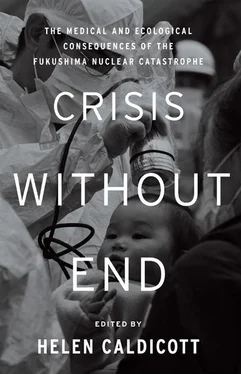

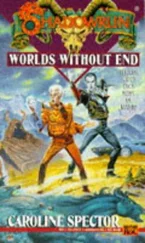
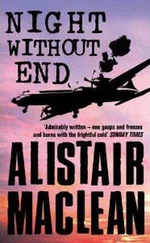
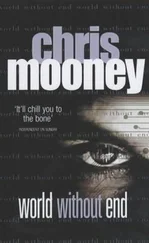
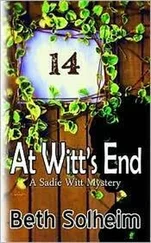



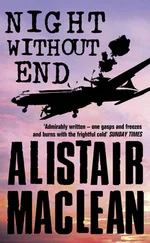


![Helen Rowland - The Widow [To Say Nothing of the Man]](/books/752764/helen-rowland-the-widow-to-say-nothing-of-the-man-thumb.webp)